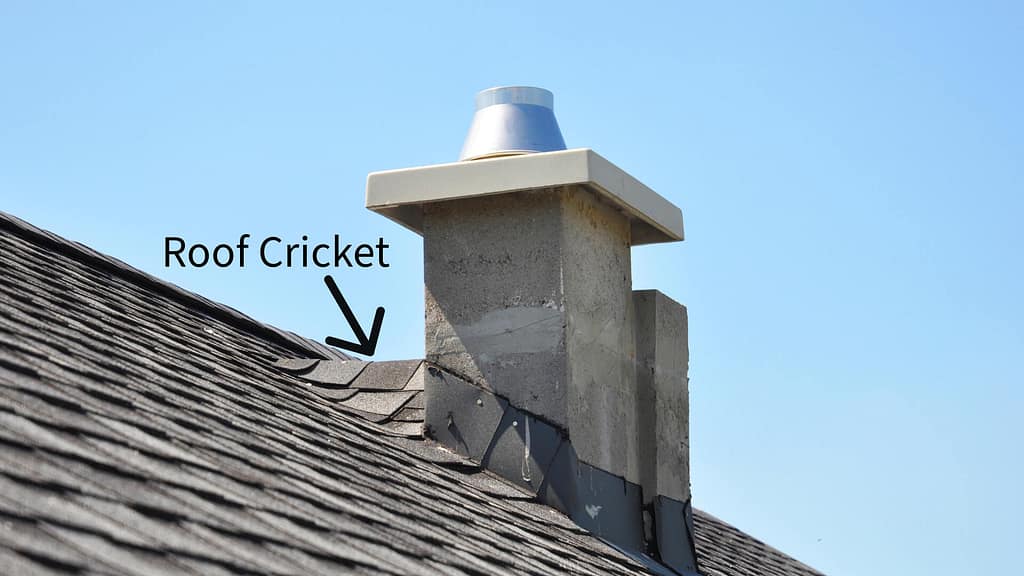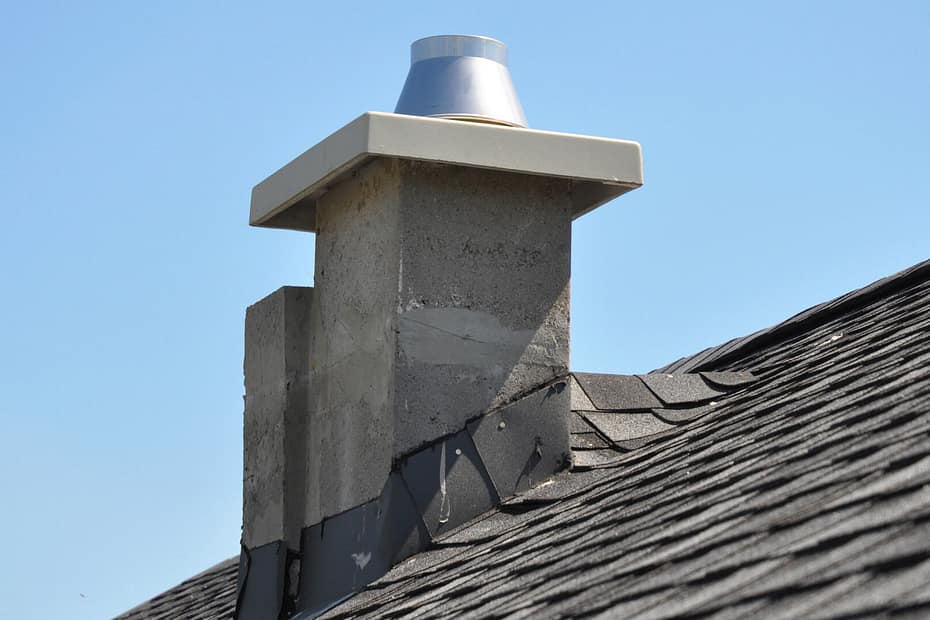Have you ever noticed water pooling around your chimney or skylight after a heavy rain? This could be a sign that your roof is missing something crucial—a roof cricket. In this post, we’ll explore what a roof cricket is, why it’s important, and how it helps protect your home from water damage.
Table of contents
What is a Roof Cricket?

A roof cricket is a small, peaked structure that is installed on the high side of a chimney or other roof penetration. Its main job is to divert water away from areas where it could pool and cause leaks. Think of it as a small, roof-like structure that directs water to flow around the chimney or skylight, instead of letting it collect behind it.
These are typically made from the same materials as the rest of the roof. Common choices include metal, like galvanized steel or aluminum, and shingles. The material chosen usually matches the roof to ensure it blends in seamlessly and functions effectively.
The Purpose of a Roof Cricket
You might be wondering why such a small structure is necessary. Here, we’ll discuss the critical role that roof crickets play in safeguarding your roof.
Water Redirection
The main purpose of a roof cricket is to prevent water from pooling on your roof. When water sits in one spot for too long, it seeps through the roofing materials and into your home, causing leaks and water damage. To prevent this, the system guides water away from these vulnerable areas and off the roof entirely.
Protecting Vulnerable Areas
Certain parts of a roof, like where it meets a chimney or skylight, are more prone to water damage because they create a natural low point where water can collect. By installing a roof cricket, you protect these vulnerable areas by ensuring water doesn’t have a chance to pool there
Common Types of Roof Crickets
Not all roof crickets are created equal. Different types serve various purposes depending on where they are installed. Let’s look at some common types.
Chimney Crickets
Chimney crickets are specifically designed to protect chimneys. Because chimneys stick out from the roof, they can create a dam where water can pool. A chimney cricket prevents this by directing water away from the chimney and into the roof’s drainage system.
Other Roof Crickets
Roof crickets aren’t just for chimneys. They can also be used to protect other roof penetrations, such as skylights, dormers, or HVAC units. While they all serve the same basic purpose—redirecting water—their size and shape might vary depending on where they are installed.
When Do You Need a Roof Cricket?
Now that you know what roof crickets are and what they do, you might be wondering if you need one. This section covers when a roof cricket is necessary.
Building Codes and Requirements
In many areas, building codes establish specific guidelines for when and where to install water-diverting structures. These codes ensure effective management of water runoff, which, in turn, reduces the risk of leaks and structural damage. For instance, in states like Colorado, building codes often require the installation of a roof cricket when the width of the chimney is more than 30 inches. This requirement is designed to prevent water from pooling behind the chimney, which can lead to significant water damage over time.
According to the 2021 International Residential Code (IRC), which is adopted by many states, a roof cricket or saddle must be installed on the ridge side of any chimney or penetration that is more than 30 inches wide. It must be covered with a material that is compatible with the roof covering.
Roof Pitch and Cricket Necessity
The angle or incline of your structure’s top surface influences the need for a water-diverting structure. On steeper inclines, water drains quickly, reducing the need for such additions. However, on flatter surfaces, water can collect, making this feature a wise choice to prevent leaks..
Installation and Costs
Once you’ve determined that a roof cricket is necessary, it’s time to think about installation and the associated costs. Let’s explore what’s involved.
Professional Installation
Installing a roof cricket is not a DIY job. It requires precise measurements and proper integration with the existing roof to ensure it functions correctly. The best way to achieve this is by hiring a professional roofer. If you’re looking to connect with contractors in your local area, Instant Roofer makes it easy to find a roofer who can expertly handle the installation.
Cost Factors
The cost of adding this protective feature can vary based on factors like the materials chosen, the complexity of the structure, and the size of the installation. For an accurate estimate, you can use our roofing calculator to determine the amount of materials required for your project. While installing this element may increase the upfront expense, it’s a wise investment that can save you money over time by preventing costly water damage.
Maintenance and Lifespan
Like any part of your roof, a roof cricket needs regular maintenance to stay effective. Here’s how you can keep yours in top shape.
Regular Inspections
Over time, weather and debris can take a toll on the materials, potentially reducing the cricket’s effectiveness. Regular inspections can catch these issues early, allowing for timely repairs.
Signs of Wear
As you inspect your roof cricket, look out for common signs of wear and tear, such as cracks, rust, or loose shingles. If you notice any of these problems, it’s crucial to address them quickly to prevent water from finding its way into your home.
Conclusion
To sum up, a small yet crucial feature, this structure significantly protects your home from water damage. It actively redirects water away from vulnerable spots, such as chimneys and skylights, preventing leaks and avoiding expensive repairs due to unchecked water intrusion.
If you’re uncertain whether your home requires this feature or if it complies with local building codes, consulting a professional roofer is a wise step. Investing in a well-installed and maintained structure ensures your home remains safe and secure from the elements, giving you peace of mind.
Fact checked by Adrian Catolico – 8/27/2024

